| Image | Plant | Status | Notes | Events |
|---|---|---|---|---|
| Carrot 'Rainbow Mix' |
Have Plant Seeds OP Collected or purchased 2022 Biennials Fruits & Vegetables Roots Full Sun Part Shade Direct Sow Sown 2023 Plants Successfully Growing |
From MIG - 2022 Includes Atomic Red, Bambino Orange, Cosmic Purple, Lunar White, and Solar Yellow. Days to Maturity: 60 For fall harvest: Direct sow first week in August: - Keep seedbed shaded, if possible, and well-watered. |
March 21, 2023 - May 20, 2023: Seeds sown | |
| Grass (for Punky) |
Have OP Collected or purchased 2022 Grasses Grains Full Sun Part Sun Part Shade Winter Sow Sown 2023 |
Collected from Dad's yard 2022. | March 4, 2023: Seeds sown (WS) | |
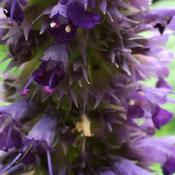 |
Anise Hyssop (Agastache foeniculum) |
Have Plant Seeds OP Collected or purchased 2022 Perennials Edibles Medicinal Scent Smoke Tea Flowers Native Wildflowers Herbs Full Sun Part Shade Stratify Needs Light Winter Sow Plants Successfully Growing |
Native to Northern North America. Zones: 4 to 8. |
|
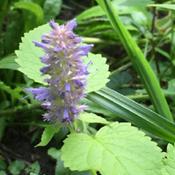 |
Anise Hyssop (Agastache foeniculum 'Golden Jubilee') |
Have Plant Seeds OP Collected or purchased 2022 Perennials Edibles Medicinal Scent Smoke Tea Flowers Native Wildflowers Herbs Full Sun Part Shade Stratify Needs Light Winter Sow Plants Successfully Growing |
6th Annual NFTSRSS - janinilulu - 2021 Native to Northern North America. Zones: 4 to 8. Planted in flower garden two. |
April 12, 2021: Seeds sown (In plug tray 1 row 1 in unheated greenhouse.) April 23, 2021: Plant emerged July 22, 2022: Bloomed |
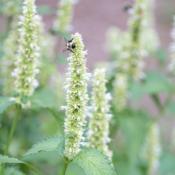 |
Anise Hyssop (Agastache foeniculum 'Licorice White') |
Have Seeds OP Collected or purchased 2022 Perennials Edibles Medicinal Scent Smoke Tea Flowers Native Wildflowers Herbs Full Sun Part Shade Stratify Needs Light Winter Sow Sown 2023 |
Received in trade from C.H. Dunnellon Florida 10-2020 Plant grew a couple inches then died. DND's All Seeds Swap #9 (2022) - dnrevel - Easy to grow white Agastache. Winter sows beautifully. Don't know for sure if it's Licorice White. Beautiful upright form that doesn't need staking. Native to Northern North America. Zones: 4 to 8. |
December 27, 2020: Seeds sown (WS - Jug 3) April 27, 2021: Plant emerged April 10, 2023: Seeds sown April 13, 2023: Plant emerged |
 |
Anise Hyssop (Agastache pallidiflora subsp. neomexicana) |
Have Perennials Edibles Medicinal Scent Smoke Tea Flowers Native Wildflowers Full Sun Part Shade Stratify Needs Light Winter Sow Plants Successfully Growing |
aka Rose Mint Chicagoland annual plant swap 2022 - S_Evans Zones 5-10. |
May 15, 2022: Seeds sown May 25, 2022: Plant emerged |
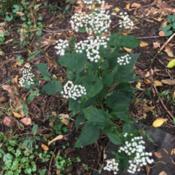 |
White Snakeroot (Ageratina altissima) |
Have OP Collected or purchased 2022 Perennials Medicinal Tea Flowers Native Wildflowers Part Sun Part Shade Stratify Needs Light Winter Sow Plants Successfully Growing |
Collected seeds 9-2020. Require a cold period to germinate - a minimum of 60 days below 40°F in moist soil (or sand or vermiculite). Sow outdoors in pots, on the soil surface, and leave uncovered, November through March. Zone: 3 to 8. |
|
 |
White Snakeroot (Ageratina altissima 'Chocolate') |
Have Perennials Medicinal Tea Flowers Native Wildflowers Part Sun Part Shade Plants Successfully Growing |
Chicagoland-Annual-Plant-Swap 2022 - LinneaL Zones: 4 to 8. |
May 15, 2022: Obtained plant (2 plants. Transplanted in Shade garden near the firepit.) |
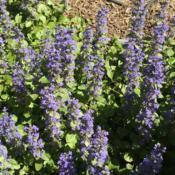 |
Bugleweed (Ajuga reptans) |
Have Plant OP Collected or purchased 2022 Perennials Edibles Medicinal Tea Flowers Full Sun Part Shade Plants Successfully Growing |
Chicagoland annual plant swap 2022 - Mone sedative Fill small pots with a seed-starter mix. Cover the seeds with a thin layer of compost and keep them moist but not soggy; They will sprout within a month. When the seedlings are viable, pot them up into larger containers. Once robust, transplant the seedlings into the garden. Zones 4-9. |
May 15, 2022: Obtained plant (2 large clumps. Transplanted in Shade garden near the firepit.) |
 |
Voodoo Lily (Amorphophallus konjac) |
Have Plant Collected or purchased 2023 Tender Perennials Flowers Houseplants Part Sun Part Shade Full Shade Plants Successfully Growing |
J.H. Champaign IL 2023 |
June 26, 2023: Obtained plant (2 bulbs. One about the size of a quarter & sprouting & the other about the size of a dime & still dormant.) July 2, 2023: Plant emerged (One starting to emerge.) |
 |
Grecian Windflower (Anemone blanda) |
Have Perennials Flowers Full Sun Part Sun Part Shade Plants Successfully Growing |
Anemone blanda, commonly called Grecian windflower, is a spreading, tuberous-rooted perennial that is native from southeastern Europe (including of course Greece) to the Caucausus and Turkey. It blooms in early spring. Plants typically grow to only 4-8" tall and feature attractive daisy-like, dark blue flowers, each of which contains 9-14 showy petal-like sepals, but no petals (apetalous). Tubers are knobby in appearance. Foliage is deeply cut and fern-like. Plants spread out to form a carpet of flowers in spring. Zones 4-8. |
|
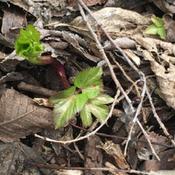 |
Garden Angelica (Angelica archangelica) |
Have Collected or purchased 2023 Biennials Edibles Medicinal Tea Herbs Full Sun Part Shade Winter Sow Plants Successfully Growing |
From DnD Swap - Phytocraft -12-2020 In Sun Garden Two 2022 |
December 27, 2020: Seeds sown (WS - Jug 5) March 30, 2021: Plant emerged (Several) |
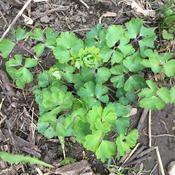 |
Columbines (Aquilegia) |
Have Seeds Collected or purchased 2024 Collected or purchased 2023 Collected or purchased 2022 Collected or purchased 2021 Collected or purchased 2020 Perennials Flowers Full Sun Part Shade Winter Sow Plants Successfully Growing |
Received in trade from N.H. Middle River Maryland 9-2020. Purple - From STSTS Swap 2-2021 3 Pink & Yellow Bi-color in Sun Garden Two 2022 3 tiny Pink & Yellow Bi-color in a pot 2022 3 Dark Purple I grew from seed in 2021 in Sun Garden Two 2022 1 Yellow that showed up in the shade garden by the pond with the Pink & Yellow Bi-color that I transplanted there 2023 Pink - 2023 Chicagoland Annual Plant Swap - Bethtrees Columbine Aquilegia Blue & White - EARLY SPRING SEED EXTRAVAGANZA #1 - 2024 - colcol - 2023 seed |
May 13, 2022: Transplanted (Pink & Yellow Bi-color into sun garden 2.) June 1, 2023: Transplanted (Pink one from Bethtrees into shade garden by the pond.) |
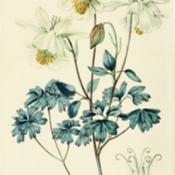 |
Sweet-Scented Columbine (Aquilegia fragrans) |
Have Seeds Collected or purchased 2024 Perennials Flowers Full Sun Part Shade Winter Sow |
EARLY SPRING SEED EXTRAVAGANZA #1 - 2024 - PlantMatt - No scent from these, pure white color. 2022. | |
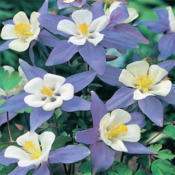 |
European Columbine (Aquilegia vulgaris 'Blue Star') |
Have Seeds Collected or purchased 2024 Perennials Flowers Full Sun Part Shade Winter Sow |
EARLY SPRING SEED EXTRAVAGANZA #1 - 2024 - Hortaholic - 2024 Burpee Zones 3 to 9. |
|
 |
European Columbine (Aquilegia vulgaris 'Clementine Red') |
Have Hybrid Perennials Flowers Full Sun Part Sun Part Shade |
DND's All Seeds Swap #9 (2022) - Jlee160 - 2022. Large fuchsia red, spurless series of Columbine has larger flowers that resemble double Clematis. Clementine Red produces perfect bouquets of flowers held above the lacy green larger-leafed foliage. These graceful beauties add elegance to your spring-blooming garden. Beautiful when combined with hostas. Height: Short 18" Spacing: Plant 12-15" apart Bloom Time: Mid-Spring to Early Summer Zones: 3-9 |
|
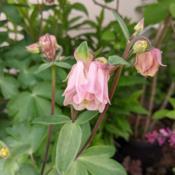 |
European Columbine (Aquilegia vulgaris 'Dorothy Rose') |
Have OP Perennials Flowers Full Sun Part Sun Part Shade |
DND's All Seeds Swap #9 (2022) - Jlee160 - 2021 This unusual selection features lacy blue-green foliage that forms a low mound, with taller stems bearing tiny double flowers. The blooms are soft-pink and absolutely packed with layers of petals like flowers set inside of flowers. A British introduction was first unveiled at the Chelsea Flower Show in 1999. Since Columbines are relatively short-lived, allow some of the plants to go to seed and self-sow. Leaf miners or sawflies may disfigure leaves around flowering time. Simply trim off the ugly foliage to rejuvenate. USDA zones: 3-8. |
|
 |
Variegated Columbine (Aquilegia vulgaris 'Leprechaun Gold') |
Have OP Collected or purchased 2023 Perennials Flowers Full Sun Part Sun Part Shade Full Shade Stratify Direct Sow Winter Sow Sown 2023 Plants Successfully Growing |
BC 2023 Zones 4a-8b. |
February 28, 2023: Seeds sown (WS about 10.) March 25, 2024: Plant emerged (One plant that I had transplanted into the stump garden in October 2023. Something started to dig it up so I put a crate over it.) |
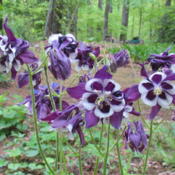 |
Columbine (Aquilegia vulgaris 'Winky Purple and White') |
Have Seeds Collected or purchased 2024 Perennials Flowers Full Sun Part Shade Winter Sow |
EARLY SPRING SEED EXTRAVAGANZA #1 - 2024 - colcol - 2023 seed Zones 3 to 9. |
|
 |
Jack in the Pulpit (Arisaema triphyllum) |
Have Perennials Edibles Native Wildflowers Part Shade Full Shade |
DND's All Seeds Swap #9 (2022) - SameOldBrandNew - 2021 G - These are from my garden but seeds are originally sourced from local woodlands. Named for its resemblance to a preacher in a canopied pulpit, Jack in the Pulpit grows wild in woodland and marsh areas and sends up its unique hooded flower in the spring. Though Native American tribes gathered and boiled the fleshy roots as a vegetable, eating the root raw causes a sensation similar to swallowing a mouthful of glass shards. This sensation is caused by the calcium oxalate crystals in the plant, which protect it from predatory animals. The faint odor, however, attracts pollinating insects to the flowering spadix, or "Jack." Early Americans found many uses for this plant, including making poultices to reduce inflammation or grinding the dried roots for flour or starch. Sowing: To break its dormancy this Jack in the pulpit seed needs a period of cold moisture, a period of warm moisture, followed by another period of cold moisture. Mix the seed with moist sand and store it in the refrigerator for 60 days, then move it to a 70-75 degrees F location for 30-60 days, followed by another 30-60 day period in the refrigerator before planting. To accomplish this naturally, simply plant the Arisaema Triphyllum seed in late fall and wait until the second spring after planting for germination. In late fall or early spring, direct sow the treated seed 1/4" deep. Germination should take place within 14-20 days. Growing: This plant grows best in moist soil and dappled shade. They grow very slowly, producing only one or two sets of leaves in their first season and flowering after about five years. For the best growth, keep the soil moist and covered by a layer of leaf mulch. This plant will spread over time, eventually forming a colony that will last for many years; the ripe berries will drop and germinate well in the following spring. Birds and mammals are attracted to the berries, which develop after the flower fades. Deer avoid this plant. Harvesting: All parts of this plant should be considered poisonous since they cause a painful burning sensation and blisters when touched or ingested. Seed Saving: Jack-in-the-Pulpit plants can become male or female depending on their environment. After the hooded female flower fades, a large cluster of red berries will form; each berry contains several seeds. Wearing gloves, gather the berries and smash them in a large container. Rinse the mixture in a strainer, removing as much of the pulp as possible until only Arisaema Triphyllum seeds are left. For best germination, do not allow the Jack in the pulpit seeds to dry; mix them with moist sand and keep them in the refrigerator until planting. It thrives in USDA Hardiness Zones 4 to 9. Jack in the pulpit prefers part to full shade and fertile, evenly moist soil. |
February 15, 2023: Seeds sown (WS 10.) |